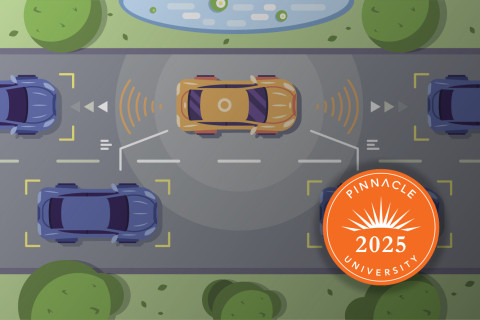
Risk (and Opportunity) Everywhere
Rob Walling of Pinnacle Actuarial Resources looks at the factors affecting liability insurance.
There is an old saying that “if all you have is a hammer, everything looks like a nail”. Similarly, one of the occupational hazards of working in insurance is that we tend to see risk everywhere. If we take a moment to look around, we see no shortage of risks presenting themselves. One rewarding benefit of working in captive insurance specifically is that not only do we see risk and finance it, but captive insurance proactively faces risks and finds ways to control and mitigate them.
There are numerous emerging and existing political, economic, cultural, environmental and technological forces creating risks the industry will be challenged to address.
Let’s start with obvious political risks. With the impeachment of a US president a genuine possibility and a likely contentious general election on the horizon, short-term political and legislative gridlock seems relatively certain. After next November’s election, all bets are off. Leading presidential candidates have promised a variety of multi-trillion dollar spending, dramatic changes in taxation and substantial changes in regulatory oversight. Beyond a potential change in chief executive, changes of control within the US Senate, US House of Representatives and at the state level are all very possible. New legislation on issues including immigration, opioids, gun control and healthcare reform will surely be introduced and actively debated.
Beyond politics and political rhetoric, the economy has shown worrisome signs of volatility and change. Foreign trade negotiations, tariffs and retaliatory tariffs, followed by new rounds of negotiations, are frequent occurrences. These trade wars have a corresponding impact on consumers, businesses, and the stock market. Growing signs and indications of overdue domestic and global recessions seem to appear daily in our news feeds.
Historically, recessions have impacted different property-casualty insurance coverages in dissimilar ways. Auto liability claim frequencies tend to decrease as vehicles are driven fewer miles. Conversely, workers compensation lost-time claims frequencies increased in 2010, at the end of the last recession, for the first time since 1997. An increase in the number of financially impaired businesses can impact coverages such as trade credit insurance, subcontractor default liability, and professional liability in the financial and legal industries. Overall, claim frequency and severity trends since the last recession all face potential disruption.
In healthcare, a number of risks present themselves with technology taking centre stage. Medical technology such as CRISPR gene editing, robotic nursing and surgical tools, and diagnostic AI systems promise to fundamentally change healthcare. Research to use gene editing to treat various cancers, hemophilia, genetic blindness, cystic fibrosis, muscular dystrophy and other diseases that result from a single gene mutation is advancing quickly. AI systems that can outperform physicians in predicting everything from heart attacks to sepsis and can more accurately diagnosis cancer, promise to not only reduce misdiagnosis, but essentially rewrite medical treatment best practices and standards.
Changes affecting healthcare are not solely technological. Rising healthcare and pharmaceutical costs continue to be a political hot button topic. Rising costs are also spurring innovation, however. In insurance, we see creativity emerging in medical stop-loss captives. Significant expansion of physician extenders and telemedicine are changing the delivery of healthcare. An ageing American population is increasing pressure on our senior care system. Consequently, we see continued growth in professional liability coverage for nursing homes and other senior care facilities in a variety of captive solutions. Finally, for the first time in a decade, we also see some signs of hardening in the medical professional liability insurance market. These market conditions tend to result in captive growth in this particular coverage.
In transportation insurance, vehicle-related technology promises accident avoidance and eventually autonomous vehicles, but with increased repair costs. Meanwhile, distracted driving, increased traffic congestion, the propagation of all manner of shared bikes and scooters, and the combined effect of a material shortage in the supply of commercial drivers with the increased demand caused by Amazon Prime, UberEats, etc., have all resulted in spikes in claim frequency and severity.
In property insurance, catastrophes continue to rule the day. Unprecedented hurricanes were seen in areas of the Atlantic this season as the impacts of previous storms in Florida and Puerto Rico are still being handled. California wildfires and related power outages and air quality concerns are impacting millions of lives. Even unusually heavy early snowfalls and strong tornadoes are proving newsworthy and changing preconceived notions in both property and crop insurance.
There are also fundamental shifts in how we work that have insurance implications. The gig economy continues to grow; however, several court cases and new legislation in California may well result in the reclassification of independent contractors as employees. This impacts insurance coverages such as employee benefits, workers compensation, employment practices liability and wage and hour liability. Many industries are seeing the impact of technology on the workforce. For some, technology makes certain employees obsolete.
In many industries, however, partnerships between technology and humans are creating new jobs. The impact of alternate work arrangements and shared work spaces, such as WeWork, continues to expand. This can be attributed in part to addressing employee satisfaction and how people want to work. The need for brick-and-mortar offices is diminishing in some industries as remote work is proving effective. However, the challenges of cyber-security and employee management in a remote work culture present challenges as well. In addition, a recent study showed that a four-day work week actually increased productivity.
Another phenomenon impacting liability insurance is the expanding use of litigation financing. Investors are increasingly willing to finance upfront expenses, such as research and expert witnesses, necessary to pursue class actions, birth injuries and other lawsuits with large potential damages, in exchange for a share of plaintiffs’ awards. This additional financial backing for lawsuits can be viewed as enabling the lottery culture and shifting the balance of power between plaintiffs and defense attorneys. This imbalance in the equilibrium in the US tort system is evidenced not only by several specific, large, high-profile awards, but also in broader increases in number and size of large-claims awards.
We are faced with a tremendous variety of risks in the coming year. Will there be a liberal democratic landslide or will we have four more years of President Trump? Will we have a recession? Will changes to the healthcare industry continue? To what brave new world will technology lead us — Star Trek, The Jetsons, The Matrix or The Terminator?
What do we know with certainty? There will be change and the unexpected will happen. There will be volatility in politics, markets and societies. There will be risks. Importantly and just as certainly, captive insurance companies will be there to assess, manage, control and finance that risk.



